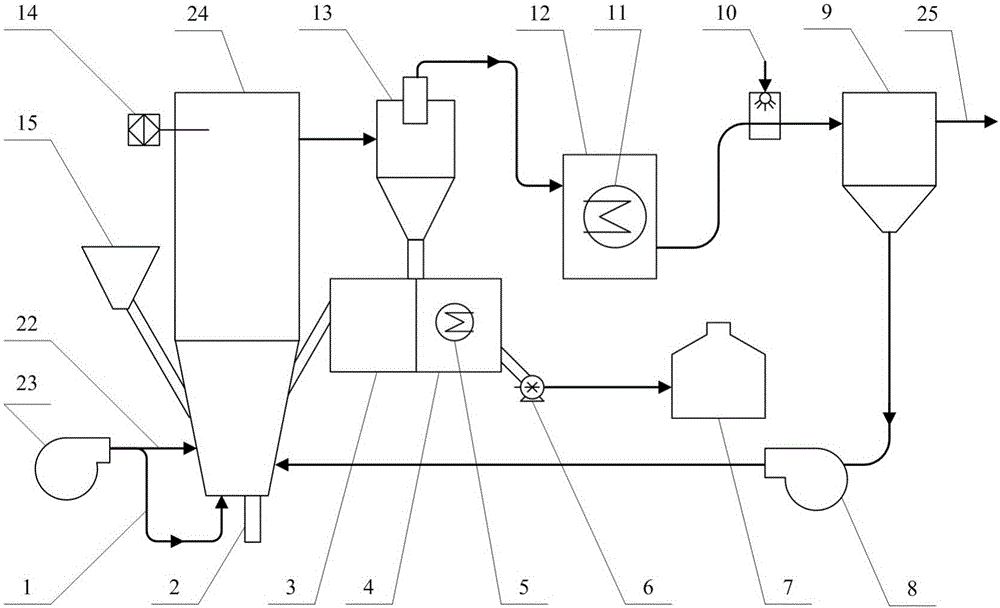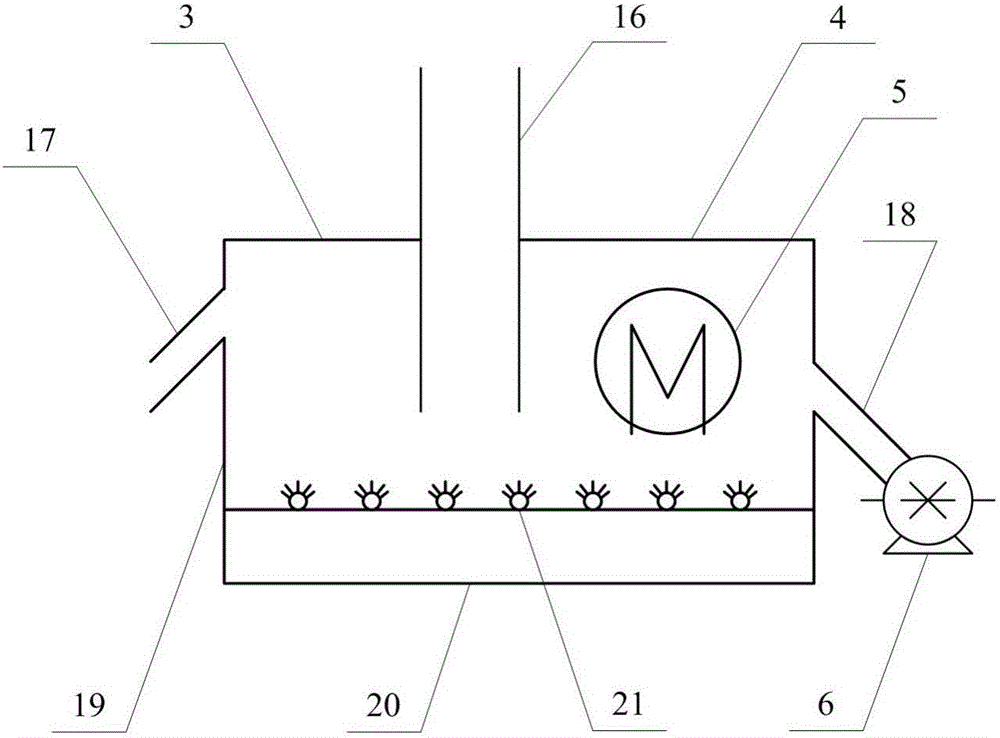Fluidized bed waste incineration treatment system
A waste incineration and treatment system technology, applied in the field of waste incineration and pollutant control, can solve the problem of high dioxin concentration and achieve the effect of low dioxin concentration and low toxicity
- Summary
- Abstract
- Description
- Claims
- Application Information
AI Technical Summary
Problems solved by technology
Method used
Image
Examples
Embodiment Construction
[0025] The preferred embodiments of the present invention are given below in conjunction with the accompanying drawings to describe the technical solution of the present invention in detail.
[0026] Such as Figure 1 to Figure 2 As shown, a fluidized bed waste incineration treatment system of the present invention comprises a furnace 24, a cyclone separator 13 and a deduster 9, and the bottom of the furnace 24 of the fluidized bed waste incinerator is connected with the feed hopper 15 and the slag discharge pipe of the waste respectively 2 are connected, the lower part of the furnace 24 is also connected with the blower 23 through the primary air pipe 1 and the secondary air pipe 22, the upper part of the furnace 24 is connected with the cyclone separator 13, and the flue gas outlet of the cyclone separator 13 is connected with the outlet of the tail flue 12. The inlet is connected, the outlet of the tail flue 12 is connected with the inlet of the dust collector 9, the inlet ...
PUM
 Login to View More
Login to View More Abstract
Description
Claims
Application Information
 Login to View More
Login to View More - R&D
- Intellectual Property
- Life Sciences
- Materials
- Tech Scout
- Unparalleled Data Quality
- Higher Quality Content
- 60% Fewer Hallucinations
Browse by: Latest US Patents, China's latest patents, Technical Efficacy Thesaurus, Application Domain, Technology Topic, Popular Technical Reports.
© 2025 PatSnap. All rights reserved.Legal|Privacy policy|Modern Slavery Act Transparency Statement|Sitemap|About US| Contact US: help@patsnap.com


